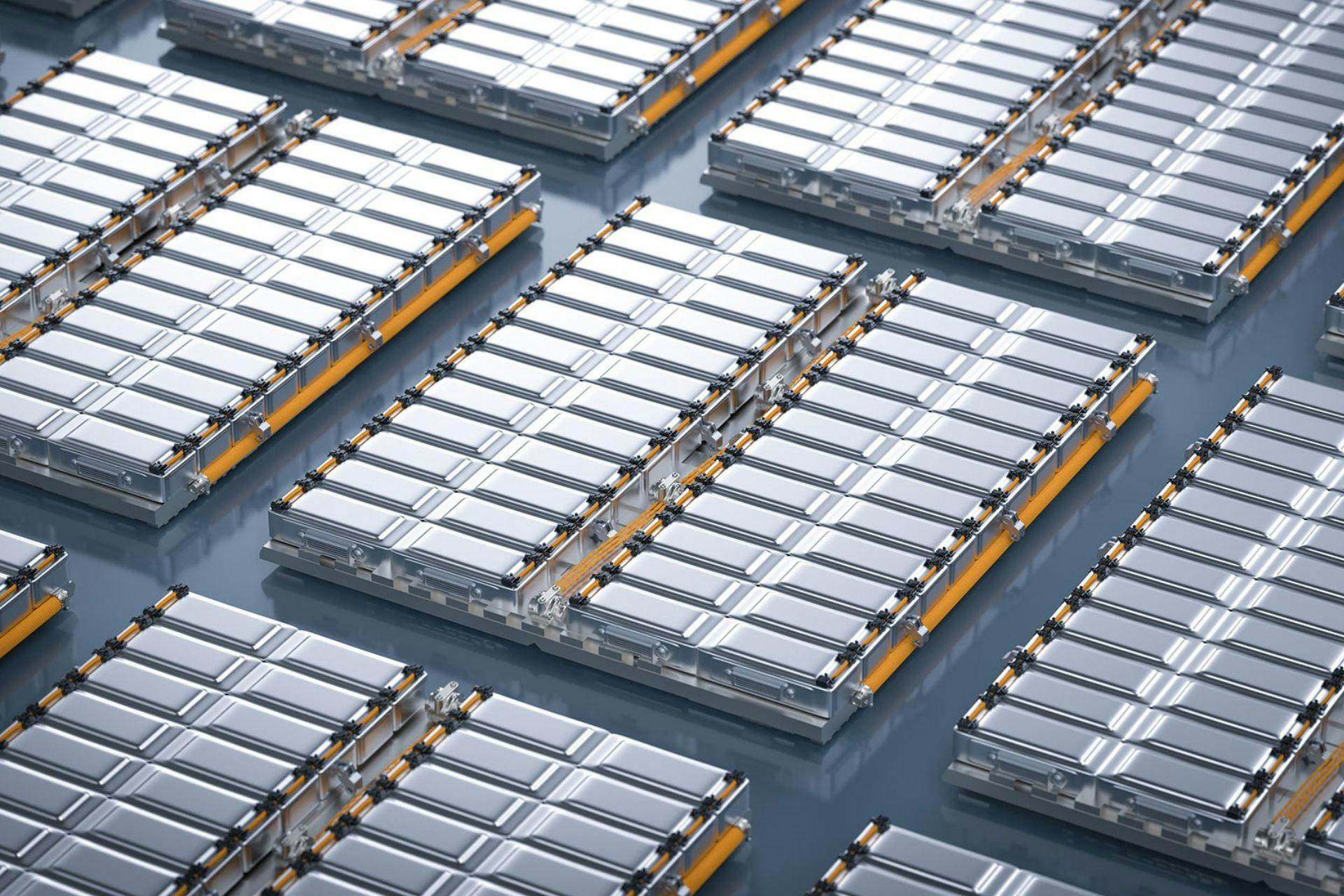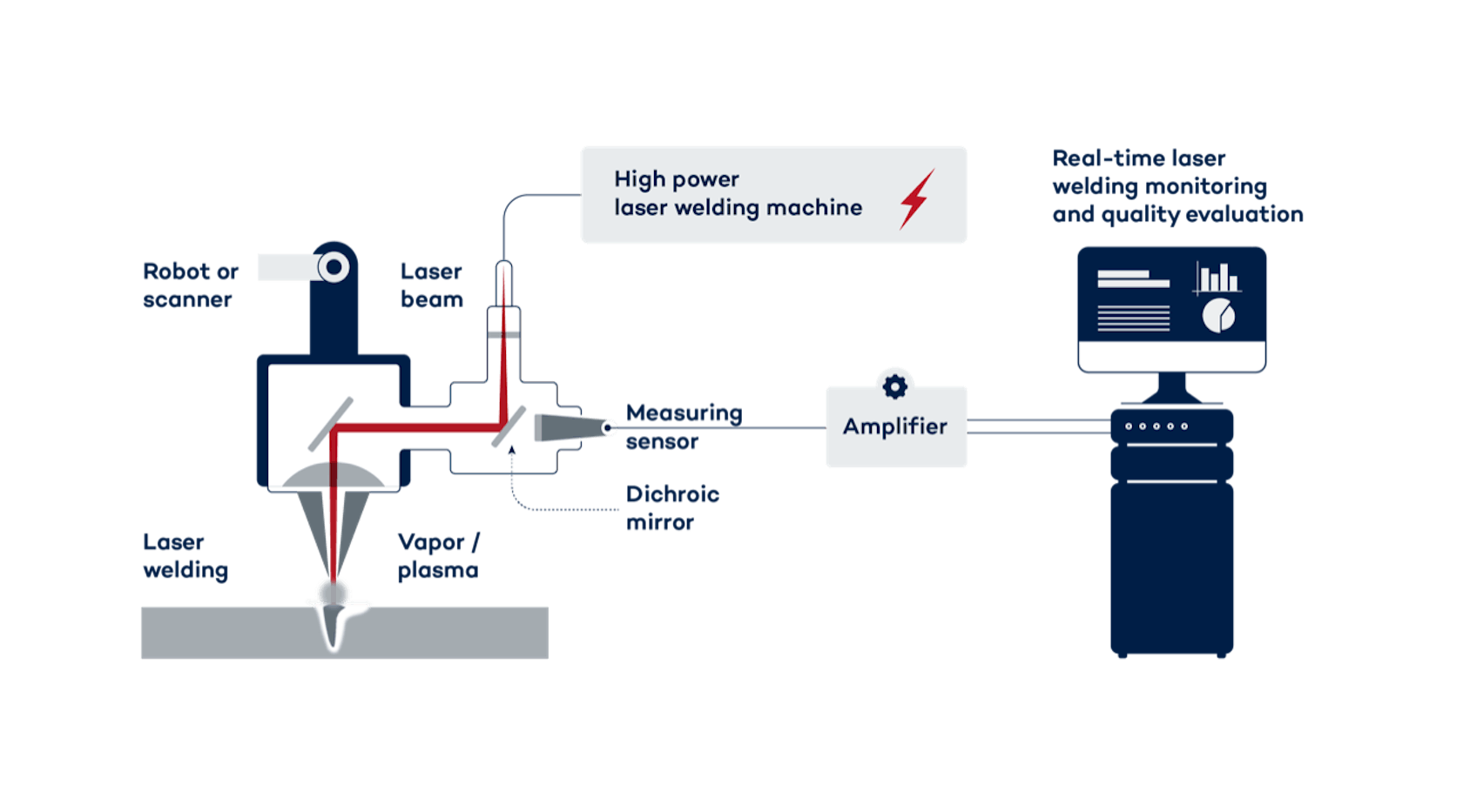Unstable laser welding processes in battery production jeopardize product quality and drive up costs. However, these issues can be tackled efficiently: with VIRO WSM, a combined system for real-time process monitoring and quality control in one.

Smart Production Efficient laser welding processes in battery production
Avoiding scrap and downtime - thanks to process monitoring
Automated laser welding is by far the most important joining process in battery production for e-vehicles. However, unstable processes impair quality and drive up costs. A process monitoring system can help solve these problems. It has already been in use for years - mainly in the Asian market - and can be integrated into virtually any laser welding line within a week.
E-car batteries must be defect-free and durable
The battery is the "fuel tank" of an electric vehicle. Yet the two components are not comparable. The battery is the heart of an e-car, and it is expensive and complex to manufacture.
The best vehicle cannot realize its potential if the battery is inadequate. Battery performance and quality directly influence the driving experience and thus customer satisfaction and brand image. Batteries that have to be replaced frequently are equally bad for the environment and the sustainability balance sheet.
That's why manufacturers need to deliver top-quality batteries: durable and flawless. But battery production in Europe is fairly in its early stages; compared to the production of combustion engines, manufacturers still have little experience with it. The potential for optimization is huge. What are the challenges, among other things, and what solutions are there - especially when it comes to welding the battery components together?
Manufacturers struggle with issues in automated laser welding
Vehicles with internal combustion engines are mainly made of steel. In contrast, "new" materials are increasingly being used in the production of battery cells, modules, and housings: mainly lightweight non-ferrous metals such as aluminum. The weight saved reduces the cars' energy consumption. In addition, very small and thin components are built into e-cars, such as electrode foils in the battery or hairpins in the motor.
Laser welding is by far the most important process for joining these parts together. Lasers can be used to join thin materials precisely and cleanly. Around 100 millimeters of seam can be welded per second: The fast process is perfect for efficient mass production.
But manufacturers are still struggling with various issues.
Severe deviations in the process, frequent interruptions in operation and a high rate of NOK parts ruin productivity and drive up costs. Similarly, all welds and contacts in the battery must be absolutely flawless. Otherwise, peak performance, capacity, and durability of the battery suffer.
How can stable laser welding processes be produced and product quality optimized to a zero defect target?
Combined process monitoring and quality control system
Laser welding stations are closed systems. The process cannot be visually inspected during operation.
Malfunctions or contamination are not initially noticed. Up to now, therefore, weld seams have generally been inspected downstream, by people or automatic systems. This alone is not sufficient for laser welding. By the time a bad seam is discovered, other defects have already been produced - due to the high speed. Frequent shutdowns to analyze and eliminate the causes of defects are expensive, as mentioned above. This is not how to run a highly automated production line.
The VIRO WSM inspection system therefore tackles the problem at an earlier stage: It monitors the welding process in real time and immediately detects and signals deviations. A sensor detects the light and thermal emissions of the melt pool at the weld seam and divides the measured signal into "normal" and "abnormal". Anomalies in the waveform of the light spectrum indicate an unstable laser signal and poor weld quality. The sensitivity of the measurement can be adjusted via tolerance bands.
With VIRO WSM, deviations are detected immediately in the welding process, not just during subsequent quality control. This allows immediate reaction and intervention before further NOK parts are produced. The measurement data helps to find the cause of the defect more quickly.
All measurement data is continuously documented; quality defects can be traced back at any time. Via statistics and deeper data evaluations, the results can be analyzed and used to optimize the welding processes incrementally.
Even the reworking of defective seams can be completely automated with the help of VIRO WSM. A potential NOK part is directly rejected and welded again. The inspection system detects rewelded seams and adjusts the tolerance bands accordingly.
In this way, process monitoring reduces manual intervention and delays in the laser welding line and ensures consistent quality. Fewer interruptions, more stable processes and fewer rejects mean: greater production output. This has a direct impact on unit costs and thus on a manufacturer's competitiveness.
Practical, proven solution for any laser welding line
The system has already been tested and used for years in the production of battery cells, modules and packs for e-vehicles: at well-known Korean companies such as LG Energy Solution, SK ON, Samsung SDI, and Hundai Mobis.
An important factor for success: VIRO WSM has minimal requirements. It requires hardly any space in the production line, neither a dedicated station nor a dedicated robot. It is compatible with any welding solution. The sensor can be placed in various locations, including directly alongside the laser scan head or laser power source.
Regardless of whether a new line is planned or an existing one is to be retrofitted, integration is extremely simple. In a standard welding line, the system only needs to be "trained" for half a day in order to be able to apply the tolerance bands. The entire commissioning process takes about a week.
VIRO WSM takes automated laser welding a major step forward, in two respects: Manufacturers can produce batteries in consistent, even better quality. At the same time, they get more stable processes, can automate their production to a greater extent and reduce costs.
Conclusion
In short
- Automated laser welding in battery production is highly efficient; however, manufacturers still struggle with quality and process stability issues.
- VIRO WSM monitors laser welding processes in real time and signals deviations immediately. This reduces NOK parts and interruptions.
- The system is already in use at well-known manufacturers and can be integrated easily into any welding line.



